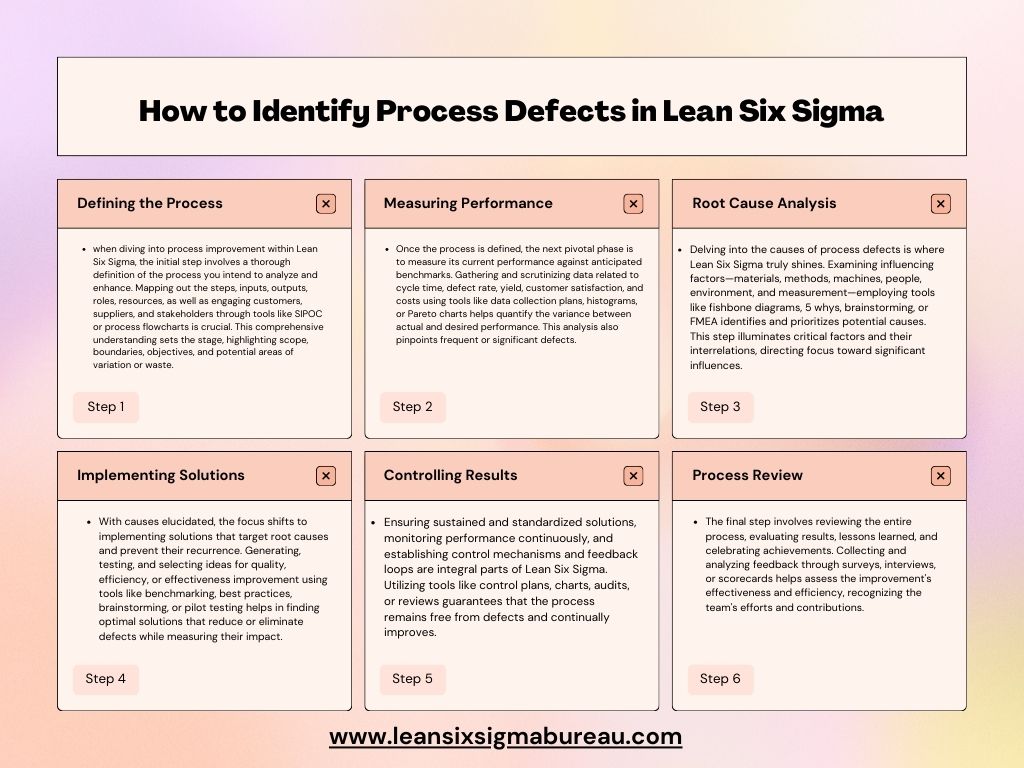Defining the ProcessWhen diving into process improvement within Lean Six Sigma, the initial step involves a thorough definition of the process you intend to analyze and enhance. Mapping out the steps, inputs, outputs, roles, resources, as well as engaging customers, suppliers, and stakeholders through tools like SIPOC or process flowcharts is crucial. This comprehensive understanding sets the stage, highlighting scope, boundaries, objectives, and potential areas of variation or waste.Measuring PerformanceOnce the process is defined, the next pivotal phase is to measure its current performance against anticipated benchmarks. Gathering and scrutinizing data related to cycle time, defect rate, yield, customer satisfaction, and costs using tools like data collection plans, histograms, or Pareto charts helps quantify the variance between actual and desired performance. This analysis also pinpoints frequent or significant defects.Root Cause AnalysisDelving into the causes of process defects is where Lean Six Sigma truly shines. Examining influencing factors—materials, methods, machines, people, environment, and measurement—employing tools like fishbone diagrams, 5 whys, brainstorming, or FMEA identifies and prioritizes potential causes. This step illuminates critical factors and their interrelations, directing focus toward significant influences.Implementing SolutionsWith causes elucidated, the focus shifts to implementing solutions that target root causes and prevent their recurrence. Generating, testing, and selecting ideas for quality, efficiency, or effectiveness improvement using tools like benchmarking, best practices, brainstorming, or pilot testing helps in finding optimal solutions that reduce or eliminate defects while measuring their impact.Controlling ResultsEnsuring sustained and standardized solutions, monitoring performance continuously, and establishing control mechanisms and feedback loops are integral parts of Lean Six Sigma. Utilizing tools like control plans, charts, audits, or reviews guarantees that the process remains free from defects and continually improves.Process ReviewThe final step involves reviewing the entire process, evaluating results, lessons learned, and celebrating achievements. Collecting and analyzing feedback through surveys, interviews, or scorecards helps assess the improvement’s effectiveness and efficiency, recognizing the team’s efforts and contributions.In conclusion, Lean Six Sigma’s approach to identifying process defects is a structured and iterative process that aims not only to address immediate issues but also to create sustained improvement in business processes
How to Identify Process Defects in Lean Six Sigma


